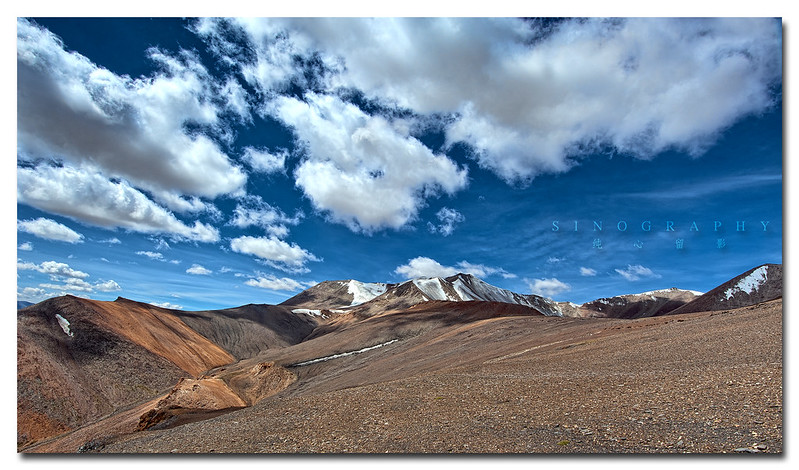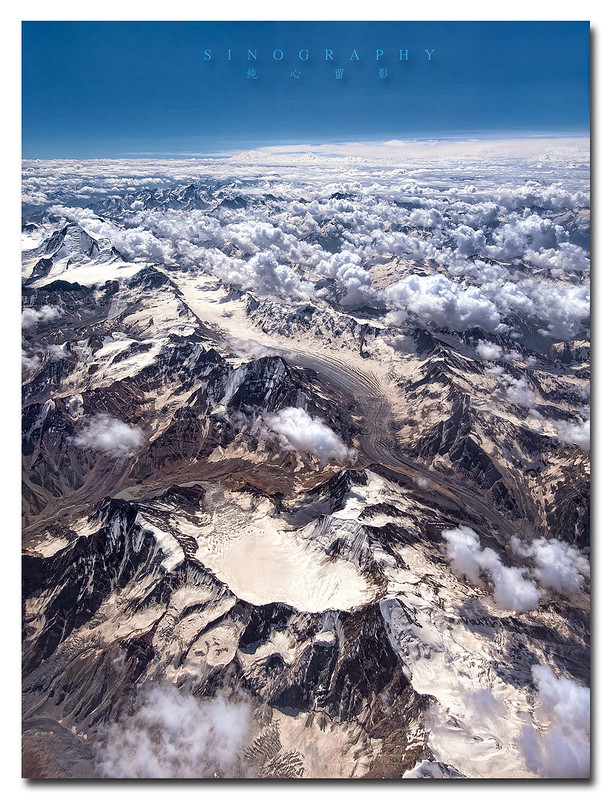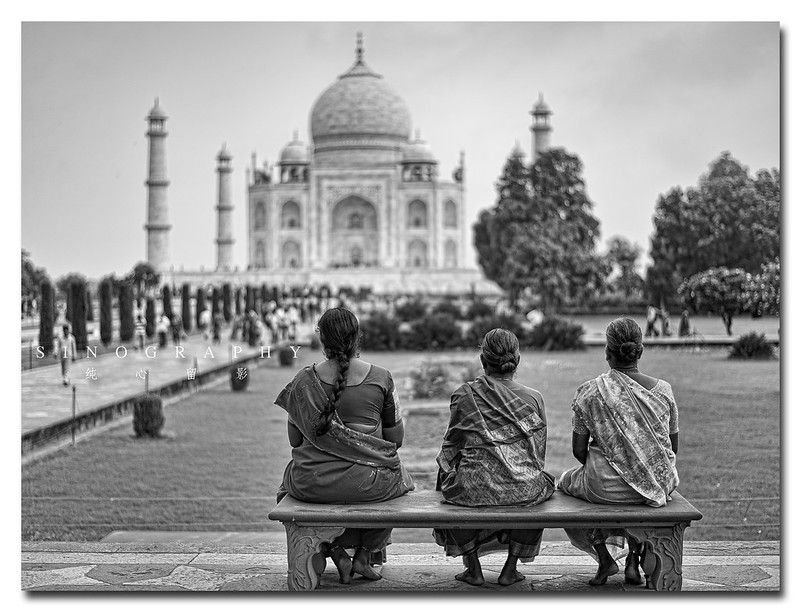You are using an out of date browser. It may not display this or other websites correctly.
You should upgrade or use an alternative browser.
You should upgrade or use an alternative browser.
- Sino's Travel Journal
- Thread starter sino238
- Start date
Very nice series and photos. Thanks for taking the effort to share them. Perhaps just a wee bit too much sharpening?
Hihi!!! So nice to see ur feedback!! Wat do u meant by too much sharpening?
And will u please point out to Sino an example and what will be the bad effect for having a pix too sharpening so I can learn from the mistake faster? Many thanks hor!!!

Drive to LEH crossing Taglangla Pass
Taglang La, claimed elevation 17,582 feet (5,359 m), is a high mountain pass located in Ladakh region of the Indian state of Jammu and Kashmir. SRTM and ASTER GDEM agree that the actual elevation is slightly lower.
It is sometimes incorrectly claimed to be the world’s second highest motorable pass at an altitude of 5,325 m. (17,469 feet). See the article on Khardung La for a discussion of the world's highest motorable passes. It is, however, the second highest motorable mountain pass in India after Khardung La and is reached via 21 Gata loops. It is located along the Leh-Manali Highway.

Domestic Flight To New Dehli
Go Airlines (India) Ltd. is the aviation foray of the Wadia Group, The airline operates its services under the brand GoAir. GoAir launched its operations in November 2005. GoAir, a low-fare carrier launched with the objective of commoditizing air travel, offers airline seats at marginal premium to train fares across India. The airline currently operates across 22 destinations 92 daily flights and approximately 638 weekly flights.
The GoAir route network spans prominent business metropolis as well as key leisure destinations across the Indian subcontinent. GoAir is currently servicing the airports at Ahmedabad, Bagdogra, Bengaluru, Chandigarh, Chennai, Cochin, Delhi, Goa, Guwahati, Jaipur, Jammu, Kolkata, Leh, Lucknow, Mumbai, Nagpur, Nanded, Patna, Port Blair, Pune, Ranchi and Srinagar. Through this route network GoAir ensures a smart value-for-money option for both business and leisure travellers, without compromising on either safety or service factors.
GoAir's distribution network has been well-researched and after thorough evaluation of the available mediums, the Airline has introduced a gamut of options designed to make tickets very accessible to the end passenger. GoAir has convenient online booking options of on its web site Go Airlines (India) Ltd. wherein the passenger or his associate can book GoAir tickets 24x7, 365 days a year from the comforts of his home. For passengers who do not have a credit or debit card or access to a Web Networked Computer, tickets can be booked from other distribution mediums including GoTravel Agents or GoCallCentre. Tickets are also available at the Airport Counters.
GoAir is positioned as 'the Smart People's Airline'. It's captivating theme, 'Fly Smart' is aimed at offering passengers a consistent, quality-assured and time-efficient service through 'pocket-friendly' fares. The airline uses the state-of-the-art Airbus A320 aircraft fleet.
GoAir is based on 'punctuality, affordability and convenience' business model. The airline has also partnered with Radixx International, a leading technology provider of automated aviation and travel related software solutions, for the use of its Air Enterprise. The adoption of such technology solutions enables GoAir to achieve superior process efficiency, thereby helping transfer a greater portion of time savings to its passengers.
Since January 2007, GoAir has been consistently recording Highest Load factors in the industry. It has been recording an average load factor of 86% achieved through a balanced mix of good on-time performance and consistent quality of customer service coupled with smart fares. As part of its aggressive future outlook, GoAir is inducting aircraft which will take its fleet size to 11 aircraft upto 2011 and will induct new routes while efficiently servicing existing ones.
The Wadia Group has been in the fore-front of corporate India for over 116 years. Today, the Group is broadly diversified in several growth industries covering aviation, textiles, chemicals, petrochemicals, plantations, foods, electronics, light engineering, health, laminates, real estate and consultancy. The Group Company has consistently emerged as market leaders in every field they have entered. Over the years, the Wadia Group has developed an enviable record of successfully managing diverse technologies. The Wadia Group has earned a reputation as a household brand through its businesses like Britannia and Bombay Dyeing.
The Vision
Go Airlines strives to maintain and enhance Passenger’s perception of its services, and in doing so will consistently endeavor to improve on its Quality and Reliability of its operations.
The Mission
To provide Safe, Secure and efficient transportation at all times with attention to essential details that uniquely differentiates our services, thus leading to strengthening and maintaining our position in the market.

Taj Mahal
The Taj Mahal is a white marble mausoleum located in Agra, India. It was built by Mughal emperor Shah Jahan in memory of his third wife, Mumtaz Mahal. The Taj Mahal is widely recognized as "the jewel of Muslim art in India and one of the universally admired masterpieces of the world's heritage".
Taj Mahal is regarded by many as the finest example of Mughal architecture, a style that combines elements from Persian, Ottoman Turkic and Indian architectural styles.
In 1983, the Taj Mahal became a UNESCO World Heritage Site. While the white domed marble mausoleum is the most familiar component of the Taj Mahal, it is actually an integrated complex of structures. The construction began around 1632 and was completed around 1653, employing thousands of artisans and craftsmen. The construction of the Taj Mahal was entrusted to a board of architects under imperial supervision, including Abd ul-Karim Ma'mur Khan, Makramat Khan, and Ustad Ahmad Lahauri. Lahauri is generally considered to be the principal designer.

The West Gate or the Fatehpuri Darwaza
The West Gate or the Fatehpuri Darwaza is one of the three entry points to the Jilaukhana (forecourt) of the Taj Mahal complex. It precedes the Great Gate and although it stands modestly in terms of size and intricacy of designs in comparison to the Great Gate, this structure, along with its Eastern counterpart forms one of the elements of the bilateral symmetrical design observed throughout the mammoth complex. It was constructed at the same time as the Eastern gate, with a characteristic portal marked by a pointed archway (pishtaq).
Last edited:

Agra's Fort
Agra's history goes back more than 2500 years, but it wasn't until the reign of the Mughals that Agra became more than a provincial city. Humayun, son of the founder of the Mogul empire, was offered jewelry and precious stones by the family of the Raja of Gwalior, one of them the famous Koh-i-Noor.
The heyday of Agra came with the reign of Humayun's son, Akbar The Great. During his reign, the main part of the Agra fort was built. Construction of the fort started in 1156 and was finished in 1605. Shah Jahan, who built the Taj Mahal, erected most of the buildings inside the fortress.
The fort is built alongside the Yamuna river and stretches almost 2.5 km. It consists of a wall built in red sandstone and several buildings inside. The wall has 2 gates, the Delhi Gate and the Amar Singh Gate. You can only enter the fort via the Amar Singh Gate.
After going through the gate you walk over a ramp and enter the Great Courtyard. On the right hand sight, there's the many pillared Diwan-i-Am (Hall of Public Audience). It was built by Shah Janan in 1628. Further you find the Royal Pavilions. It contains beautiful mosques (Nagina Masjid & Mina Masjid), palaces (Macchi Bhavan, Khas Mahal, Shish Mahal, Shah Jahani Mahal) and the Zenana Mina Bazaar. Several of the buildings are made of pure marble with beautiful carvings. To cool off the rooms in the marble pavilions, the walls were hollow and filled with running water.
From the balconies in the pavilions, you have a nice view on the Yamuna river and the Taj Mahal.
As a matter of fact, the emperor Shah Jahan, who built the Taj, was imprisoned by his son Aurangzeb in the Agra Fort where he had a view on the building erected for his deceased wife. Shah Jahan is said to have died in the Musamman Burj, a tower with a beautiful marble balcony. From there you probably have the best view on the Taj. Between the many pavilions, you find small well maintained gardens.
Justintime
New Member
Fantastic series, love this shot !
Similar threads
- Replies
- 0
- Views
- 2K
- Replies
- 0
- Views
- 400
- Replies
- 0
- Views
- 330
- Replies
- 0
- Views
- 519
- Replies
- 0
- Views
- 2K












